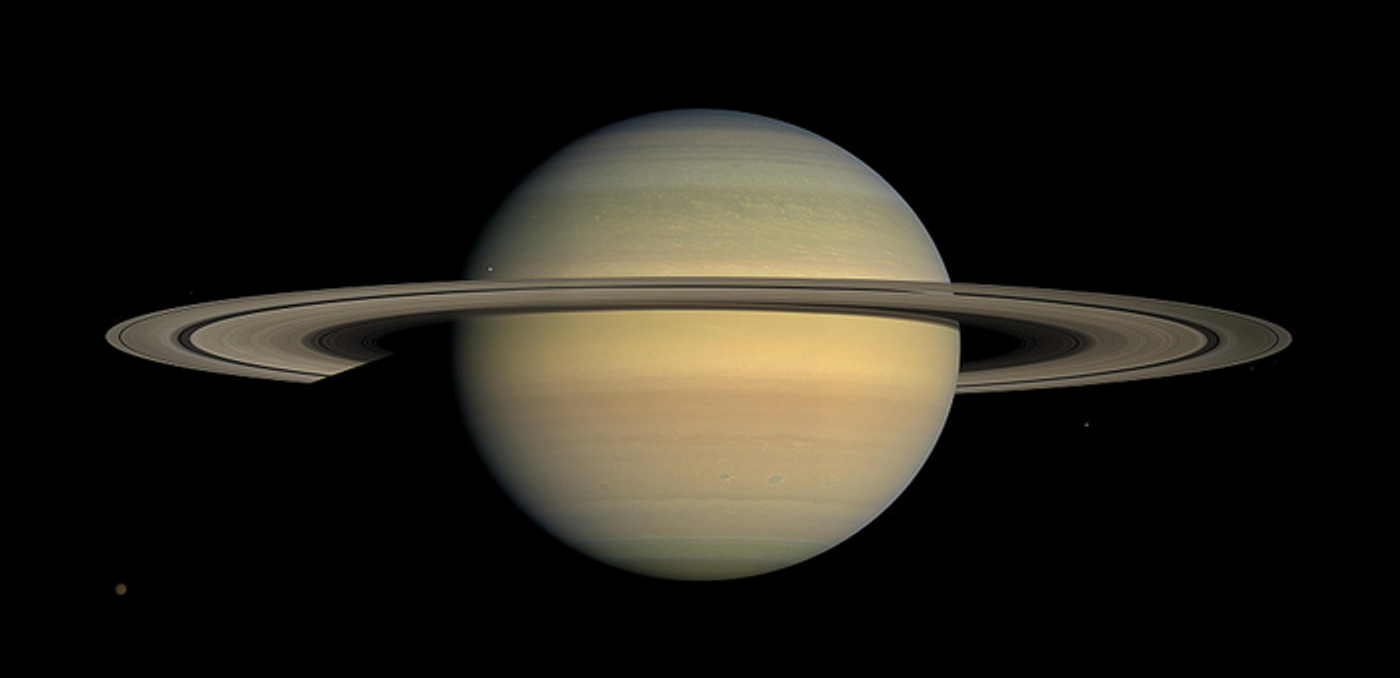Rings of Saturn Likely Formed Around Time of Dinosaurs, Challenging Previous Age Estimates
The rings of Saturn are one of the most recognizable and awe-inspiring sights in astronomy, as they can be easily discerned in almost any telescope, but they are also one of the most mysterious objects ever studied, as well. How did they form? How old are they? How much longer will they last?
Saturn with its majestic rings, which a recent study estimates to have formed around the time of the dinosaurs. (Credit: NASA/JPL/Space Science Institute)
These questions are addressed in a recent study published in Icarus where a research duo examined how the rings of Saturn are substantially younger than previously thought, on the order of a few million years, along with estimating the remaining lifetime of the rings, as well. This study holds the potential to help scientists better understand both the history and future of our solar system.
“Our inescapable conclusion is that Saturn’s rings must be relatively young by astronomical standards, just a few hundred million years old,” said Dr. Richard Durisen, who is an Astronomy Professor Emeritus at Indiana University, and lead author of the study. “If you look at Saturn’s satellite system, there are other hints that something dramatic happened there in the last few hundred million years.” For context, Dr. Durisen hypothesized that Saturn’s rings formed during the time of the dinosaurs, and he explains more about the research in a video here.
This study has been in the works long before the science was conducted, as Dr. Durisen and co-author, Dr. Paul Estrada, who is a research scientist at NASA Ames Research Center, have maintained the longstanding hypothesis that Saturn’s rings are younger than previously thought. This is due to the bright appearance of the rings that the two scientists believe would be much harder due to interplanetary meteoroids impacting the rings.
For the study, the two researchers developed models using data from the now-retired NASA Cassini mission to help explain the formation and evolution of Saturn’s rings both in the past and future. The models showed that meteoroid impacts result in a much shorter lifespan for Saturn’s rings compared to the age of the solar system, which is approximately 4.5 billion years old.
“We have shown that massive rings like Saturn’s do not last long,” said Dr. Estrada. “One can speculate that the relatively puny rings around the other ice and gas giants in our solar system are left-over remnants of rings that were once massive like Saturn’s. Maybe some time in the not-so-distant future, astronomically speaking, after Saturn’s rings are ground down, they will look more like the sparse rings of Uranus.”
Going forward, Dr. Durisen wants to see what new discoveries future space missions to Saturn will make, especially pertaining to its moons, which he says could support life, either in the past or present.
As the Cassini mission retired in 2017 and is the most recent spacecraft to explore Saturn, and nothing is currently in the works to return, scientists continue to pour over the data and discover new insights into one of the most awe-inspiring sights in astronomy.
What new discoveries will scientists make about Saturn’s rings in the coming years and decades? Only time will tell, and this is why we science!
Sources: Labroots, Icarus, News at IU, Indiana University, NASA, Labroots (1)
As always, keep doing science & keep looking up!









